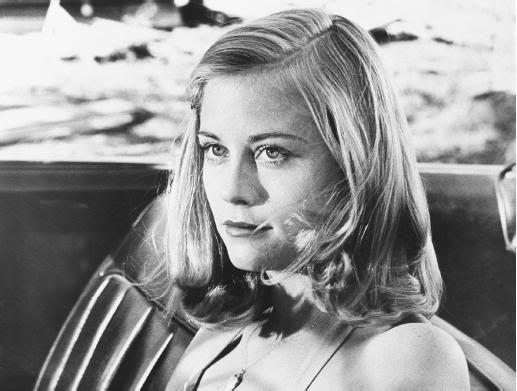The film is an ensemble, with everyone from Cloris Leachman to Ben Johnson staking out their own important chunks of the plot, but the main characters are really three teenagers played by Timothy Bottoms, Jeff Bridges and Cybill Shepherd. As Sonny, Bottoms is the film's protagonist, an affable but aimless football player who begins an affair with his coach's wife (Leachman) while trying to figure out what to do with his life after graduation. Bridges plays Sonny's best friend, Duane, and Shepherd, in her first film role, is Duane's pretty but self-centered girlfriend Jacy Farrow. We spend most of our time with Sonny and Jacy -- both Bottoms and Shepherd are excellent in their roles -- but the real acting credo comes from film veteran Ben Johnson as Sonny's mentor Sam the Lion, an aging rebel who tries to keep Sonny on the right track but also unintentionally ropes Sonny into a life spent shiftless in a dying town. Johnson won an Academy Award for his role (as did Leachman), with his scene by the river with Sonny as the centerpiece of his understated performance.
Johnson reportedly refused to take the part of Sam the Lion until Bogdanovich cleaned up the script a bit, taking out the cursing associated with Sam's character and some of the cruder bits of dialogue. People usually mention this now as a sort of charming anecdote, like, "Look at the old fuddy-duddy movie actor who didn't approve of bad language," but in my mind, Johnson had a point: just because cursing and sex might make a depiction of life on screen seem more realistic, they don't necessarily make the film better. There's a fine line between ruining art through censorship and ruining it by slapping whatever you want onto your chosen canvas just because you can, and movies in the seventies were particularly guilty of running wild with their newfound artistic freedom: there's a lot of nudity in The Last Picture Show, and a lot of sex, and every now and again the bare breasts feel more arbitrary than necessary. It's quite possible that Johnson improved the film by requesting script revisions, at least in the characterization of Sam the Lion if nowhere else.
All in all, The Last Picture Show is an excellent film, probably the best I've watched for Summer Under the Stars so far. I especially appreciated the nuances of small town life that it gets right, like the Christmas dance and the non-bombastic way that gossip travels at lightning speed, and I give Bogdanovich credit for being able to translate a novel to the big screen without smothering all the actors involved. It's not a perfect film, but it's close.



No comments:
Post a Comment